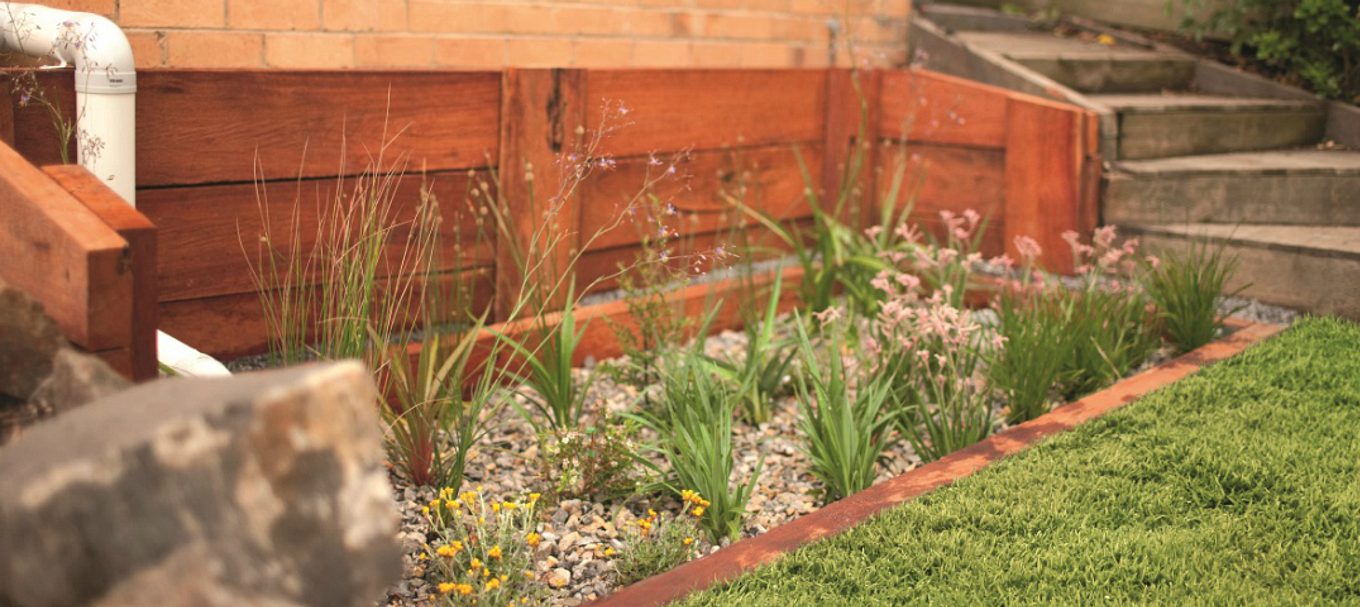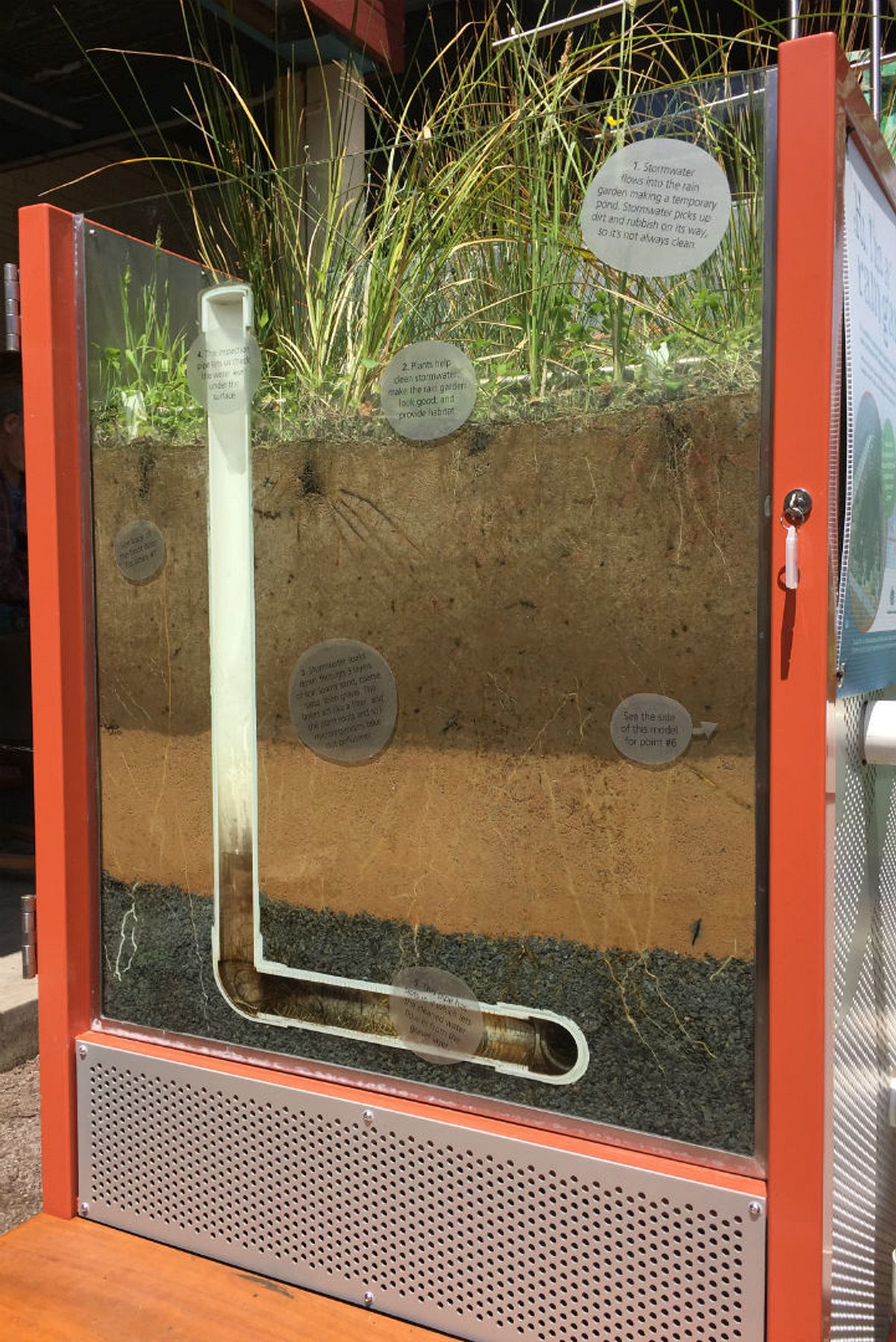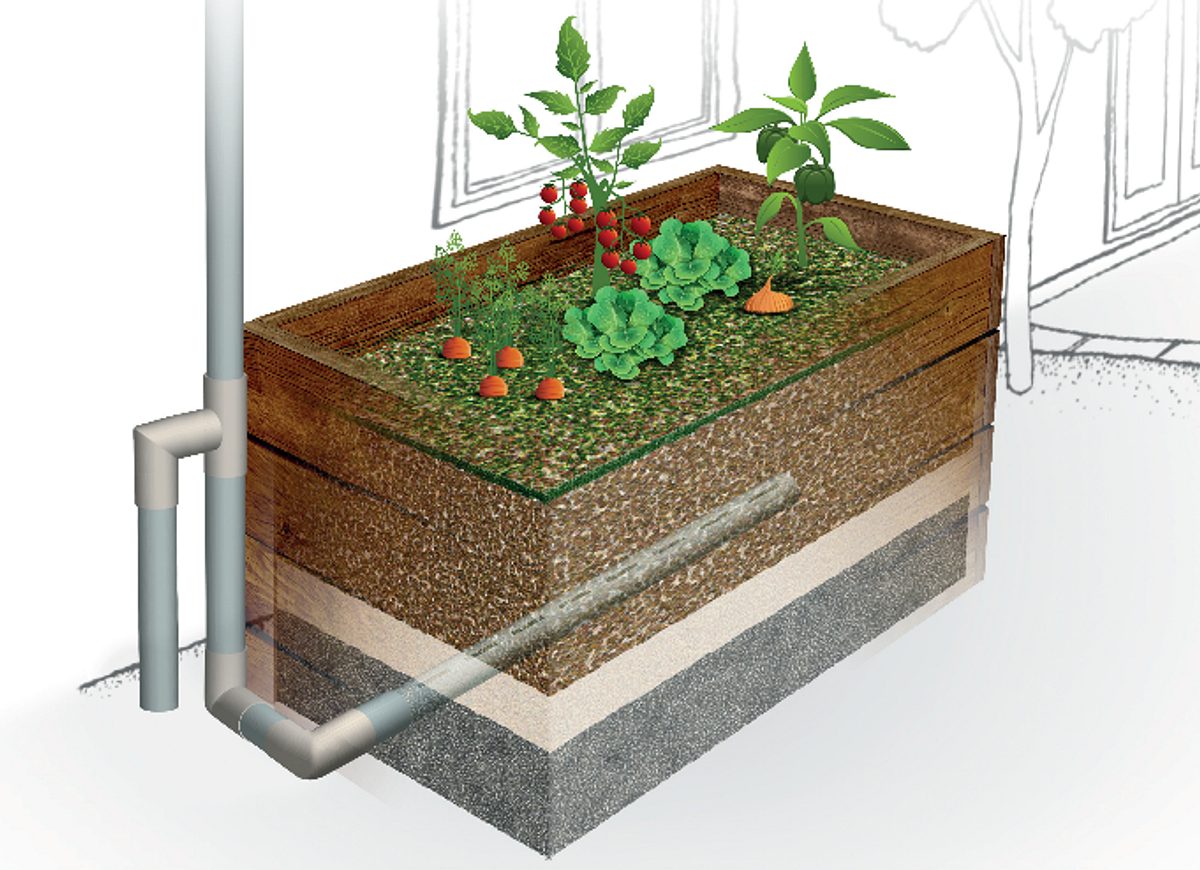
How to make a raingarden
Do you forget to water your plants and end up with shrivelled stalks instead of lush greenery?
Would you like to help slow down and clean up rainwater running off your property before it heads out into local creeks and rivers?
Well, a raingarden may be just the thing for you.
By collecting the rain that runs off your roof, driveway and other hard surfaces and directing it into a raingarden, you can look after plants in your garden that you might forget to water. And with the right plants, raingardens can also clean the water before it heads out to sea.
So why not get prepared now and set up your raingarden ready to capture every drop of winter rain?
What is a raingarden?
There are many different types of raingardens, such as above-ground planter boxes, in-ground gardens or even swales, which all aim to collect rainwater. They are specially-designed garden beds that gather and retain water runoff from hard surfaces in your yard, which then soaks through to the plants.

This raingarden shows the different soil layers, drainage pipes, plant roots, and, when the pump’s turned on, the flow of water through the soil.
Setting up a raingarden
A raingarden won’t cost you a fortune or take a lot of effort to maintain. The first step is to work out what type of raingarden would suit your house and yard and whether you would like to grow vegetables or native plants. It is also essential to employ a certified plumber to modify any stormwater connections.
If you want to grow vegetables in your raingarden, an above-ground planter box with sub irrigation is a great option. You’ll be pleased to know that veggies like beetroot, tomatoes, onions and greens are particularly suited to the conditions.
This kind of planter box is designed to receive water through a pipe to a base reservoir, like a wicking bed. The plants then wick up the water through their roots as they need it. This design reduces evaporation, which would have happened if the water had just poured on top of the soil, and it stops your veggies from getting drowned from a downpour.

If vegetable-growing isn’t your main aim, and you’re focused on slowing down the rate of water run-off and cleaning the water, you can use in-ground or planter box options.
Be fussy about the plants you choose if you want to slow down and clean up the water as some are better than others at filtering out pollution, and others love it when they are subject to flooding for short periods and longer spells of dryness so they’ll need to be perennial.
Make sure at least 50% of your plants are nitrogen-fixing species – sounds complex, but these are just plants that suck up nutrients.
Check out the Water Sensitive SA guide to raingarden plant species for a selection that will do the trick or ask staff at State Flora or your local native nursery to recommend the best plants for you.
Once your raingarden is set up, you’ll still have to do the odd thing to keep it happy, such as weeding, making sure water doesn’t erode the surface, and checking that all your plants are getting evenly watered.
Another thing to consider when you’re building a raingarden is the impact that modifying or diverting your stormwater could have in the event of a major storm. Your certified plumber will be able to help you with this and it is recommended to check in with your local council too.
You can find out more with the how to build a raingarden fact sheet or this instructional video.
Main image: in-ground raingarden (image courtesy of Melbourne Water)
This story was originally posted in February 2017.





